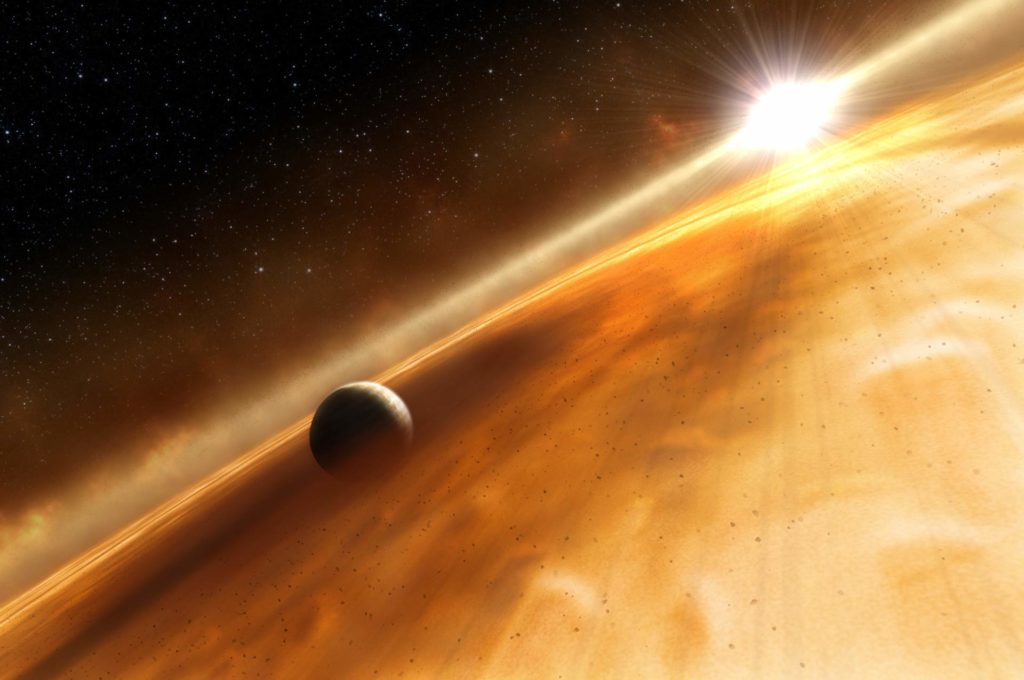
Along with Lisa Prato and other members of DEFT (Disks and Exoplanets Flagstaff Team) at Lowell Observatory, and in collaboration with astronomers at Rice University, Lauren Biddle has found a new way to detect exoplanets around the youngest stars, which perhaps unexpectedly, embraces magnetic activity rather than avoiding it. Many of the youngest stars are surrounded by a protoplanetary disk made of leftover material from their formation, and it is the interaction between the young planet and this material that makes this detection method possible. The disk itself can contribute to magnetic activity signatures via the process of accretion, where material from the disk travels along the star’s magnetic field lines and eventually hits the stellar surface, resulting in drastic changes in the entire system brightness. For the first time, the team identified a planet, CI Tau b, that interacts with the disk in such a way that it perturbs the rate of accretion, effectively causing the brightness of the whole system to pulsate on the timescale of its orbital period. Biddle’s work contributed to the confirmation of CI Tau b, the youngest planet known to date.
Equipped with a new tool for planet detection, the team looks to find more young exoplanets with the aim to increase their numbers in the exoplanet census and contribute to a more complete understanding of the formation process of planetary systems.